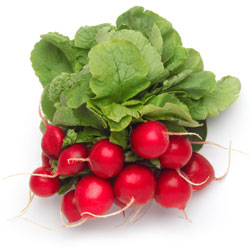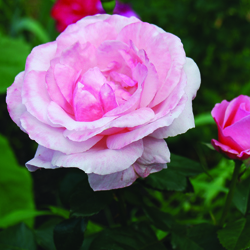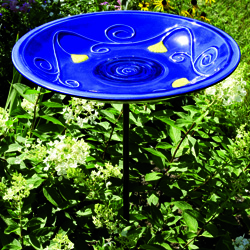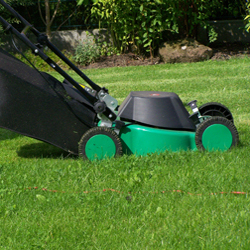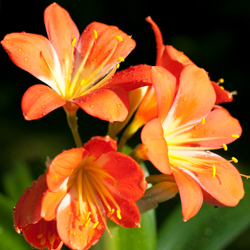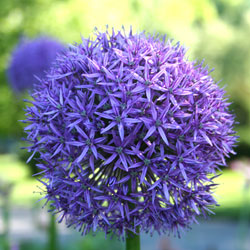Happy New Year!
January 10th is Houseplant Appreciation Day! Take a little extra time this year to check your houseplants. Repot into a larger pot if roots are protruding through the bottom drainage holes. Remove dead or yellowed leaves. Give the plant a soft shower to remove dust from the leaves and follow with a good deep watering and a general fertilizer. Spray with insecticidal soap if you see any pests. Heating systems rob indoor air of moisture creating an unhealthy environment for houseplants. Check plant soil more frequently for dryness and water as necessary. Increase humidity by grouping plants together, placing them on a humidity tray or treat them to an occasional misting. Add a Clivia to your houseplant collection! This lovely addition will add color in low light areas of the house where most other houseplants will not flower. Remember to fertilize all indoor plants that are in bloom right now.
Now, out to the garden! It’s the beginning of a new year, so let’s make a new resolution. No more thinking of your garden and landscape as “work.” Puttering in the garden, creating beauty and value in your house, and getting fresh air are just some of the benefits of gardening. In fact, studies show gardening for one-half hour reduces cortisol, a stress hormone, more than reading for an equal time. Plus, it burns approximately150 calories, increases the desire to eat vegetables and is a way to show personal creativity! Wow!
So, let’s get to it…this is the best time to ready your garden for the upcoming year.
Now:
- Be mindful of potential frost watches and warnings. Be prepared to protect susceptible plants. Plastic is a conductor of frost. If using plastic as frost protection for plants, make sure that it is kept from touching the plants themselves.
- After danger of frost has passed, flowering holiday plants like poinsettia, cyclamen, cineraria and azalea should be put outdoors in a sheltered area until they are ready to be planted in their permanent spot.
Trees and Shrubs:
- Now is the time to control next season’s pests. Apply a dormant spray of horticultural oil to fruit trees and roses to kill overwintering insects. Only spray when temperatures are above 45 degrees Fahrenheit.
- Bare-root: Fruit and ornamental trees wait for you at the garden center. Fruit trees come in different sizes including dwarf, semi-dwarf, and regular height. Even if you only have a tiny balcony, many of the genetic dwarves grow quite nicely in containers.
- Protect trunks with white protective products to prevent burning and splitting.
- Flowering Shrubs: Remove old flowers from camellias and azaleas and clean the area around the plants to reduce petal blight. Apply fungicide containing Pentachloronitrobenzene (PCNB) to camellias. Plant early flowering shrubs now while in bloom, including forsythia, camellias, lilacs and witch hazel.
- Check all plants, especially citrus, camellias, azaleas, and gardenias for color. Pale or splotchy leaves result from lack of chlorophyll. Apply fertilizer with iron or sulfur to restore the bright green color.
- Spraying Trees and Roses: If you didn’t apply copper oil spray in fall, do it now. A week later, follow with an all-purpose dormant oil spray to smother pests hiding in the bark and prevent peach leaf curl. In February, reapply the copper dormant spray. Alternatively, consider a product such as Bonide Orchard Spray, containing insecticide and fungicide.
- Prune: Good time to prune deciduous trees and shrubs including roses. Remove dead, diseased and crossing branches first. Then, prune to shape and maintain size. Remove old canes from roses and deciduous vines. (Remember, don’t prune early spring blooming plants such as lilac, quince, flowering cherry, Philadelphus, etc, or you will be removing the flowers)
- If your Hydrangea macrophylla, can’t decide if it’s pink or blue, nudge it by changing the soil pH. Most soil in Contra Costa County is alkaline. Therefore, most hydrangeas are pink or lavender. To intensify pink, apply 3-4 cups of dolomitic lime around the base of the plant and water well. If you prefer blue, increase soil acidity by sprinkling approximately 3 tablespoons aluminum sulfate around the plant and water well. Or use a product such as Master Nursery™ Hydra Blue Aluminum Sulfate. Reapply the color booster several times during the growing season.
Perennials:
- Divide and replant perennials (or share with your neighbors)
Veggie Garden:
- Cold tolerant lettuces, arugula, bok choy, fava beans, lettuce, mizuna, radish, spinach, garlic, onions and shallots may all be planted as soon as the ground is workable.
Garden Color:
- Plant winter annuals including cyclamen, snapdragons, sweet alyssum, stock, pansies and violas.
- Fertilize all spring-blooming bulbs as the foliage emerges.
- Plant bulbs for summer blooming cut flowers such as lilies, gladiolas, alliums and cannas.
Lawn:
- Use pre-emergent weed control to prevent crabgrass seed germination when soil temperatures reach 50⁰F.
- Assess general lawn appearance. Are there worn areas in the lawn requiring replanting or path installation?
- Keep an eye out for poor drainage areas in the yard this winter. Take steps to rectify the problem once the area has drained and the soil is no longer wet and heavy. Avoid walking on wet areas as this compacts the soil, reducing soil air space necessary for healthy plant growth.
Basic Chores:
- Weed (if necessary); broadcast pre-emergent weed control, mulch to prevent additional weeds. Begin fertilizing when the soil warms.
- Make sure that all potted plants are well drained and move under an overhang if necessary. Empty all plant saucers of excess water.
- In late February prepare your lawn mower for the up coming season. Drain and replace old oil, replace spark plugs and sharpen blades.
- Take a look at your garden tools. Clean, repair and sharpen as necessary. Take note of what tools you may be missing to make your gardening chores easier and treat yourself to a pre-spring gift!
- Don’t forget to feed our feathered friends this winter. We carry a great assortment of wild bird food, suet, feeders and birdbaths to keep them happy and healthy.
- While the leaves are still off many trees and shrubs, survey your garden. Does it need a WOW factor? Consider planting a cut flower garden where it is enjoyable, a kitchen herbal garden by the kitchen door or a romantic moon garden. What about a stunning focal point using vibrant garden art, brightly colored birdbath or fine statuary? Is there a place for a garden shed for tool storage or a garden bench for relaxation? How is the lighting in your garden? This is a good time to install landscape lighting.
Take time now to enjoy and dream about your garden. It will be spring before you know it!
